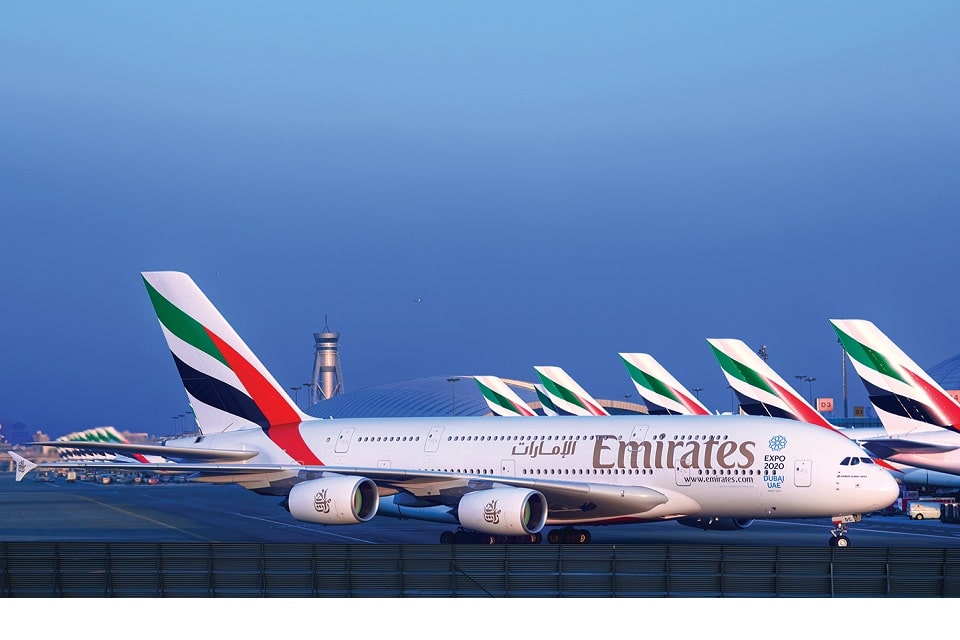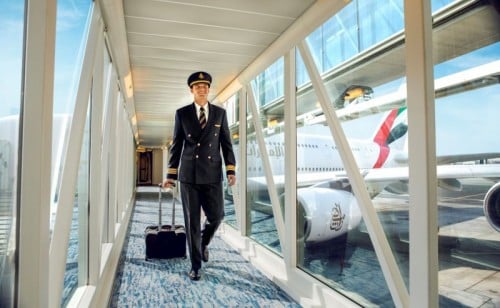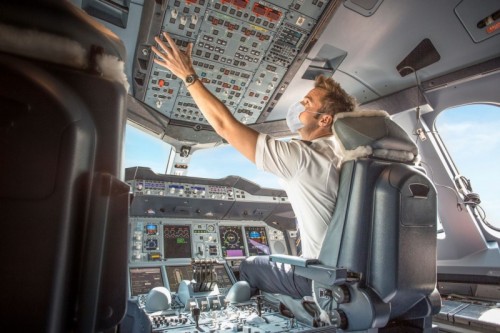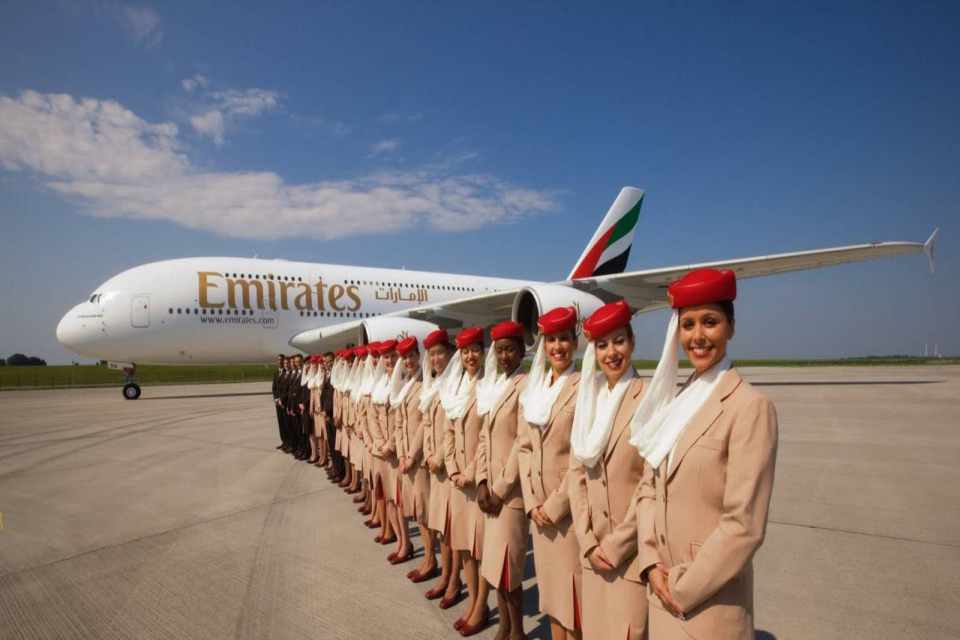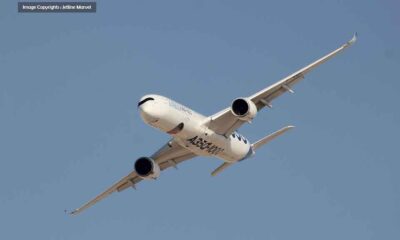Aviation
These are the 8 benefits of being an Emirates Pilot.
These are the eight benefits of becoming an Emirates Pilot and becoming a part of the world’s largest and youngest fleet airline. #Emirates
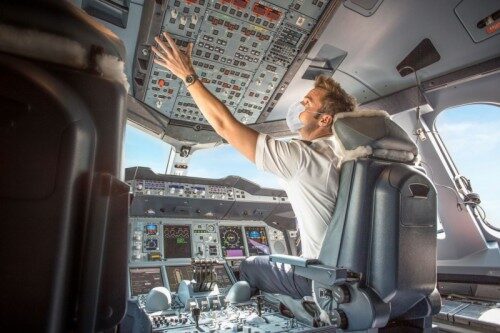
Emirates, the world’s largest operator of Airbus A380s and Boeing 777s, is looking for First Officers who fulfil the airline’s high safety, technical, and customer service criteria. Successful individuals can expect to reach new professional heights with Emirates.
1.The world’s youngest airline fleet.
Emirates currently employs wide-body aircraft. It is the world’s largest operator of Airbus A380s and Boeing 777s, and the only airline firm in the world that employs A380 full-service aircraft. It also entails piloting one of the world’s youngest and most modern fleets, which today includes 265 Airbus and Boeing planes.
2.What does it mean to be an Emirates airline pilot?
Enjoy a fantastic lifestyle in vibrant Dubai with our entire wide-body fleet and ever-expanding worldwide route network. There are 265 Airbus and Boeing planes. With Emirates’ ongoing fleet renewal efforts, pilots will also be flying Boeing 787-9 Dreamliner’s, Boeing 777-Xs, and Airbus A350-900s in the future years.
3.Pilots can fly to 140 different destinations.
Emirates has the world’s largest network, based in Dubai but connecting the majority of the world’s busiest networks. A future with Emirates entails flying to different locations within the airline’s network, which spans six continents and 140 cities.
It also means flying one of the world’s youngest and most modern fleet, now numbering 265 Airbus and Boeing aircraft. With Emirates’ continuous investments in renewing its fleet, the airline’s pilots will also be flying Boeing 787-9 Dreamliners, Boeing 777-Xs and Airbus A350-900s in the coming years.
4.How does Emirates train its pilots?
Emirates’ pilots complete thorough, evidence-based training programmes in-house with highly trained instructors in specially developed venues, thanks to the company’s cutting-edge infrastructure for pilot training and type rates. Ten full-flight simulators for Boeing 777s and Airbus 380s are housed in the airline’s cutting-edge training center. The airline’s expansion provides several prospects for natural professional advancement – first officers can slowly advance to become captains, technical pilots, standards’ captains, examiners, and instructors.
5.What it’s like to live in Dubai as an Emirates pilot.
Emirates provides a variety of perks designed to help pilots and their families live a meaningful lifestyle, including a competitive tax-free pay, significant housing and education allowances, and exceptional medical and dental coverage. Employees receive discounted freight and travel perks for the entire family, including tickets for guests, across the airline’s global network. Furthermore, the Emirates Platinum card provides a variety of benefits and discounts at hundreds of retail and hospitality shops both locally and abroad.
6.Pilots have the option of selecting their preferred flight and destination.
On Emirates’ innovative rostering system, pilots can bid for preferred flights and destinations to ensure they have the opportunity to spend quality time with their loved ones on special occasions. On a typical workday, Emirates’ flight deck crew is escorted to and from home, as well as through the airline’s headquarters’ fast-track check-in facilities.
7.Emirates is a mini-world airline with over 160 nationalities.
Flight and cabin staff from more than 160 countries enjoy a collaborative relationship that reflects the multicultural environment of Emirates’ hub Dubai. The city’s reputation as a safe, secure, energetic, and technologically advanced city is well known. Major yearly athletic events, a diverse range of lifestyle activities, first-rate hospitality and cuisine, breathtaking sites, international schools and hospitals, and world-class infrastructure all contribute to Dubai’s status as a destination for millions of expats.
Emirates’ Boeing 777 Fleet Tops 859,000 Flights..!(Opens in a new browser tab)
8.What are the requirements for becoming an Emirates Pilot?
Candidates for the post of First Officer must have experience flying multi-engine, multi-crew aircraft, a valid ICAO Airline Pilot License, and a minimum of 2,000 flying hours on aircraft with a maximum take-off weight of 20 tonnes.
Interested individuals should carefully review the eligibility requirements before applying online. here: https://www.emiratesgroupcareers.com/pilots/

Aerospace
India is set to build a central command for the Air Traffic Control system, called ISHAN

India’s air traffic growth has led to increased responsibilities for air traffic control. The Airports Authority of India (AAI) is considering centralizing air traffic control for aircraft, dividing the country into four regions. The goal is to consolidate India’s segmented airspace into a single entity to improve air traffic management (ATM) efficiency, safety, and smoothness.
Recently, the AAI invited expressions of interest to develop a detailed project report for the Indian Single Sky Harmonized Air Traffic Management (ISHAN) initiative in Nagpur. Under this plan, air traffic controllers in Nagpur would handle domestic flights flying above 25,000 feet, eliminating the need for coordination among controllers in different regions.
For domestic regional flights operating above 25,000 feet, control would shift to the central command in Nagpur. This consolidation aims to enhance airline operations, increase flight handling capacity, and reduce congestion and flight times for passengers.
Currently, the AAI provides ATM services over Indian airspace and adjoining oceanic areas, covering over 2.8 million square nautical miles. This airspace is divided into four flight information regions (FIRs) in Delhi, Mumbai, Kolkata, and Chennai, along with a sub-FIR in Guwahati.
FIRs are responsible for providing air traffic services, including weather information, visibility, and search and rescue assistance. The proposed unification under the ISHAN initiative aligns with the projected growth of the aviation industry, which anticipates a doubling of domestic passenger traffic by 2030.
Aviation
Airbus is set to increase the production rate for the A350 as demand surges

Airbus SE is set to boost production of its advanced A350 widebody jet as it capitalizes on rising demand for long-distance travel and wide-body aircraft, amidst the ongoing crisis affecting its competitor Boeing due to issues with the B737 Max.
The surge in orders for Airbus’s A350 aircraft has instilled confidence in the company, prompting them to ramp up production rates. This move is particularly advantageous as Boeing continues to grapple with production quality issues surrounding its 787 and 777x aircraft.
In 2024 alone, Airbus has received 137 orders for the A350, signaling a need to expand manufacturing capabilities to meet customer demands. With 1,277 orders received and 592 aircraft delivered as of April 2024, Airbus is poised to fulfill pending deliveries efficiently.
The European aircraft manufacturer announced plans to increase production of A350 jets to 12 per month by 2028, surpassing earlier projections aiming for 10 per month by 2026. This decision was disclosed alongside the company’s first-quarter figures.
The Asian market is proving lucrative for the A350, with significant orders from airlines like Indigo and Air India, totaling nearly 70 aircraft commitments for the future. Meanwhile, Airbus is progressing with its A220 and A320 programs, aiming for a monthly production rate of 14 and 75 aircraft, respectively, by 2026. Additionally, the long-range A321XLR is anticipated to commence service in the third quarter of the current year.
In contrast, Boeing has been compelled to scale back production due to regulatory pressures aimed at enhancing factory processes. While Airbus anticipates a positive market outlook, Boeing continues to face challenges with FAA certification and quality approvals, resulting in ongoing delays for its 737 Max and 777x models.
Financially, Boeing reported a significant cash burn of $3.9 billion in the first quarter, leaving it with $7.5 billion in cash and short-term securities by the quarter’s end, down from $16 billion at the beginning of the year. Consequently, Boeing’s stock has plummeted by 38% in the year so far, contrasting with Airbus’s 14% gain, marking Boeing’s lowest performance in over a year.
For a full listing including details on customers and regions, as well as historical data for the previous year, go to the download section below.
- March 2024 deliveries: 63 deliveries to 32 customers
- March 2024 gross orders: 137
- 2024 deliveries to date: 142 deliveries to 45 customers
| Single-Aisle | A300/A310 | A330 | A340 | A350 | A380 | TOTAL | |
|---|---|---|---|---|---|---|---|
| Total Orders | 19470 | 816 | 1774 | 377 | 1277 | 251 | 23965 |
| Total Deliveries | 11705 | 816 | 1598 | 377 | 592 | 251 | 15339 |
| Aircraft in Operation | 11007 | 271 | 1482 | 202 | 591 | 234 | 13787 |
Aviation
All passengers killed in plane crash, after pilot let his children to control the plane

When boarding a plane, passengers entrust their safety to the skilled hands of the pilot. However, tragedy struck when one of the flight ended in disaster as all passengers lost their lives in a horrific plane crash.
In 1994, during a flight from Moscow to Hong Kong, tragedy struck as an Aeroflot relief pilot made a fateful decision. In a move that would have devastating consequences, the pilot invited his own children into the cockpit to play with the controls. Little did anyone know, this seemingly innocent gesture would lead to the loss of all 75 lives aboard the aircraft.
It was a seemingly innocent act that led to catastrophic results. The relief pilot, Mr. Kudrinsky, invited his two children, Yana, 12, and Eldar, 15, into the cockpit during the late hours of the night. Little did anyone know, this simple gesture would set off a chain of events that would end in tragedy.
Once in the cockpit, the children were allowed to sit in the captain’s chair and play with the controls, unaware that they should have been disabled as the plane was in autopilot mode.
Eldar, perhaps in a moment of curiosity or innocence, held the control column down for a mere 30 seconds. Yet, in those brief moments, the autopilot disengaged, thrusting the aircraft into manual control.
By the time the pilots regained their seats and attempted to regain control, it was too late. Despite their efforts to pull the plane out of a dive, they overcorrected, causing the flight to climb almost vertically, ultimately stalling it.
Final moment Flight 593 crash
In the final moments, as the pilots struggled to stabilize the aircraft, Flight 593 crashed into the Kuznetsk Alatau Mountain range in southern Russia, completely obliterating the plane and claiming the lives of everyone on board.
Investigations revealed a chilling truth: there was no evidence of technical failure. Instead, the crash was attributed to the unthinkable decision to allow inexperienced hands to manipulate the controls of a commercial aircraft.
The black box recording captured the harrowing sequence of events, providing a grim reminder of the human cost of a lapse in judgment. In just over two minutes, the lives of all on board were tragically short, leaving behind a legacy of sorrow and unanswered questions.


